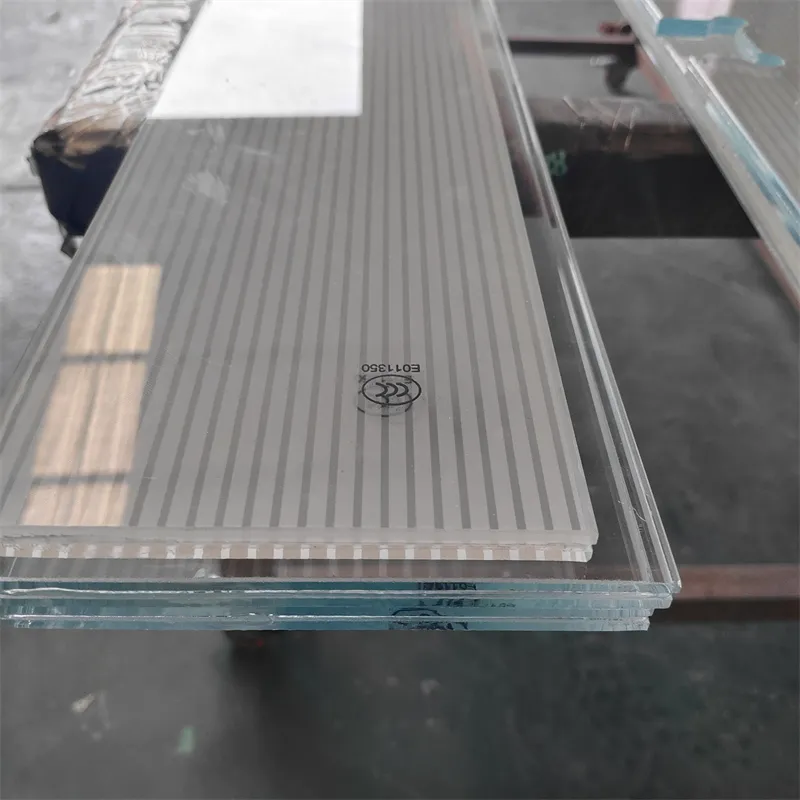10 月 . 19, 2024 06:13 Back to list
what is the difference between tempered glass and regular glass
The Difference Between Tempered Glass and Regular Glass
When it comes to materials used in construction, design, and various applications, glass is a widely favored choice due to its versatility, aesthetic appeal, and functional qualities. However, not all glass is created equal, and understanding the differences between tempered glass and regular (or annealed) glass is crucial for both consumers and professionals in the field.
Manufacturing Processes
The primary difference between tempered glass and regular glass lies in their manufacturing processes. Regular glass, often referred to as annealed glass, undergoes a simple cooling process after being formed. This cooling occurs slowly, allowing the glass to reach a uniform structure. While this process is adequate for many applications, it also leaves the glass susceptible to breakage under stress or impact.
In contrast, tempered glass is made using a heat treatment process known as tempering. The glass is first heated to very high temperatures (around 1200°F or 650°C) and then rapidly cooled. This process not only increases the glass’s strength but also puts it into a state of internal compression. As a result, tempered glass can withstand greater stress, making it much less likely to shatter under sudden impacts or temperature changes.
Strength and Safety
The strength of tempered glass is one of its most significant advantages. It is approximately five to six times stronger than regular glass of the same thickness. This enhanced strength makes it ideal for use in environments where safety is a primary concern, such as in shower doors, glass doors and tables, and façades of buildings. In the event of breakage, tempered glass shatters into small, blunt pieces rather than sharp shards, reducing the risk of injury.
On the other hand, regular glass poses a greater risk of injury if it breaks. When broken, it can produce sharp, jagged fragments that can cause serious cuts or injuries. This inherent weakness makes regular glass unsuitable for highly trafficked areas or applications where safety cannot be compromised.
what is the difference between tempered glass and regular glass

Thermal Resistance
Another critical difference between tempered glass and regular glass is their thermal resistance. Tempered glass can withstand significant temperature fluctuations, making it an excellent choice for use in environments exposed to heat, such as in kitchens or near fireplaces. This quality allows tempered glass to be used in applications like oven doors and restaurant kitchens, where high heat is prevalent.
Regular glass, however, is more susceptible to thermal breaks. Rapid temperature changes can cause it to crack or shatter, making it less reliable in situations involving extreme temperatures. Consequently, using regular glass in areas where it may face heat variations is generally not advisable.
Cost and Applications
While tempered glass offers numerous benefits, it is typically more expensive than regular glass due to the additional manufacturing processes involved. The cost can vary based on thickness, size, and specific requirements of the glass. However, for many safety-conscious consumers and businesses, the investment is worthwhile.
Tempered glass is used in various applications, including automotive windows, glass facades, shower enclosures, and more. Regular glass still has its place, used in windows, partitions, and areas where stress and thermal resistance are less of a concern.
Conclusion
Understanding the differences between tempered glass and regular glass is essential when determining the right material for any project or application. Tempered glass, with its enhanced strength, safety features, and thermal resistance, is often the preferred choice for situations demanding durability and security. Regular glass, while suitable for many ordinary uses, lacks the resilience of tempered glass and poses higher risks when it comes to breakage. In making informed decisions regarding glass selection, both individuals and professionals can ensure that the materials used will meet the specific demands and safety standards necessary for their intended applications.
-
Wired Glass: A Strong and Secure Glass Solution for Various Applications
NewsNov.04,2024
-
Tinted Glass: A Stylish and Functional Choice for Modern Homes
NewsNov.04,2024
-
The Elegance and Versatility of Silver Mirrors
NewsNov.04,2024
-
The Advantages of Copper Free Mirrors
NewsNov.04,2024
-
Tempered Glass: A Reliable Choice for Modern Applications
NewsNov.04,2024
-
Pattern Glass: Stylish and Functional Glass for Modern Design
NewsNov.04,2024
Related PRODUCTS














